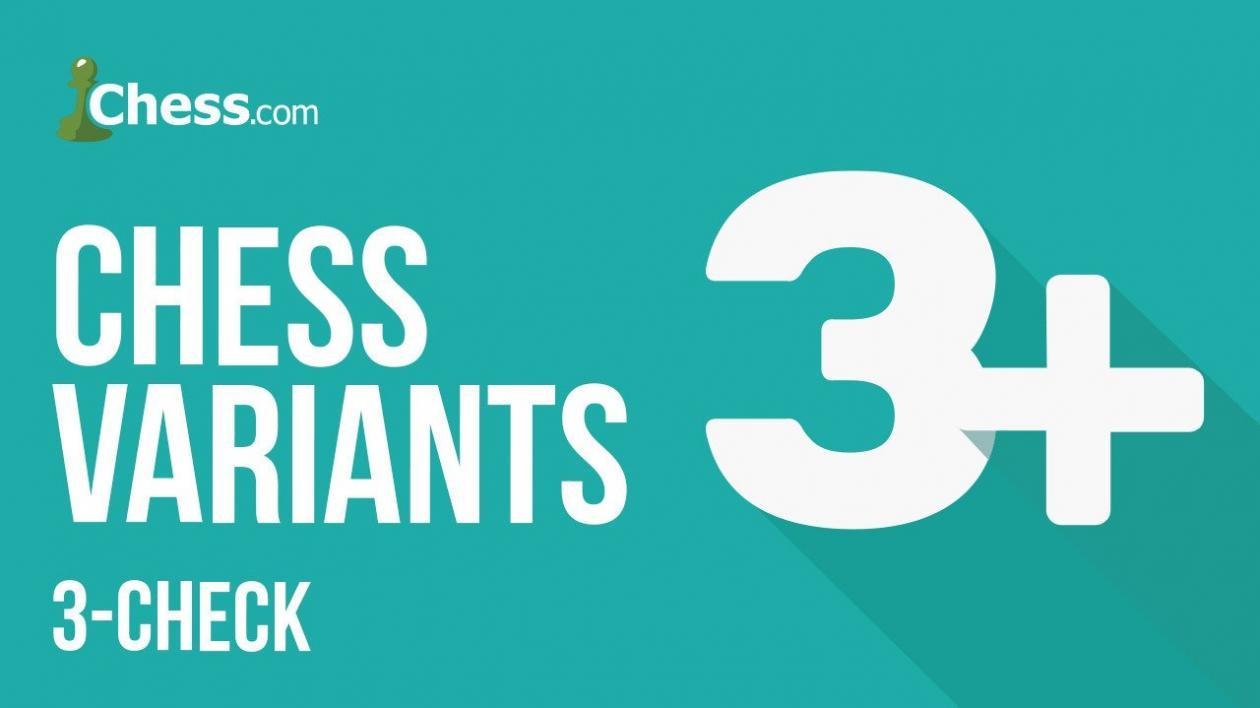
The 3-Check Traps You Need To Know
You don't play 3-check on the Chess.com live server? That's a shame. I thought we could be friends.
Why is the game great? All that opening theory that masters know more about? Yeah, it's all useless. Draws? Almost never. Oh, and did I mention that I can explain the rules in one sentence?
The first person to get three checks, or a checkmate, wins.*

"Only you can help me increase the number of 3-check players on Chess.com." (Photo: Lennart Ootes.)
Bughouse takes a few paragraphs. I would know. Back in the mid-1990s, my partner and I won the first-ever National Middle School Bughouse Championship. We had to crowd-source the rules with the other players before the tournament began.
Also, 3-check still reflects the spirit of chess -- getting to the king. Take that, giveaway chess. (Oh, but we should definitely add "giveaway" to the live server too.)
I've played a decent amount of 3-check in my time. And while I may never be as good as MVL, I've learned a thing or two from the game. I've also taught the rules to a few 2600s, and in the first few games, they're big underdogs. Why?
They don't know some of these opening traps.

1. The diagonal leading to f2/f7. This should be obvious, but some people think they can allow a bishop to aim at their f-pawn.
By the way, in 3-check, a knight can be just as deadly sacrificing on f2.
2. The "...Nd4 trap." This one is pretty common but harder to see. White's normal development is invaded by this knight centralization.
3. The "Nd5 trap." OK, so chess and 3-check theory does align here somewhat. If you play the Open Sicilian, then you know that placing a knight on d5 with black pawn on e6 is definitely not taboo. Ditto for 3-checks.
Here's a practical example of an early Nd5. While I didn't play perfectly afterward, the knight was a thorn in Black's position. Not pertaining to the opening, but the game also shows another 3-check theme: Going for two checks without a viable path to a third is a Pyrrhic victory.
4. The "poisoned e-pawn." That's right, regular chess has a poisoned b-pawn, but in 3-checks, taking the "free" center pawn can often expose your own king.
Here's a practical example showing why taking the e-pawn can backfire:
5. The "two-knight tango." This is a catch-all for positions where two knights team up and the enemy king just can't get away. It happens in many forms, so we'll close by just presenting one case:
Let's get more players competing in 3-check! You can even join this 3-check club to discuss more tips.
Hopefully with these opening tips you'll be able to win some quick games against those that don't read the Chess.com articles. Believe it or not, there's almost no 3-checks theory on the internet, so this article is nearly all five ECO volumes in one. (OK, not really, but I'll expand as I learn more personally.)
IM Danny Rensch has some more tips for you. If you want to see two masters play each other in 3-check, just check out our personal game history -- almost all 3-check!
Oh, and MVL isn't the only top-10 player who enjoys 3-check. When I told one elite player last year that we added it to the site, he admitting to analyzing "1-check" chess in the middle of the last Candidates' Tournament.
I'll keep his identity a secret, but if you can figure out how White has a forced win in "1-check" you can post how in the comments (there are likely multiple solutions; try to find the fastest).
*Actually we did have a brief internal debate at Chess.com on whether a double-check should count as one or two checks. You're almost certainly going to win anyway, but in the end, we decided it would just count as one check.


